Have you ever heard of puzzle scrambles? If not, have I got a treat for you!
I was introduced to this critical thinking puzzle scrambles many years ago and have loved using them in the classroom. My students enjoyed them so much that I figured out new ways to use them.
Critical thinking is imbedded in each puzzle. Because puzzle scrambles require students to use critical thinking they look at it like a game it’s a win-win for you and for them!
Curious to know what they are? Here are some examples!
—– Vocabulary words from Charlotte’s Web —–
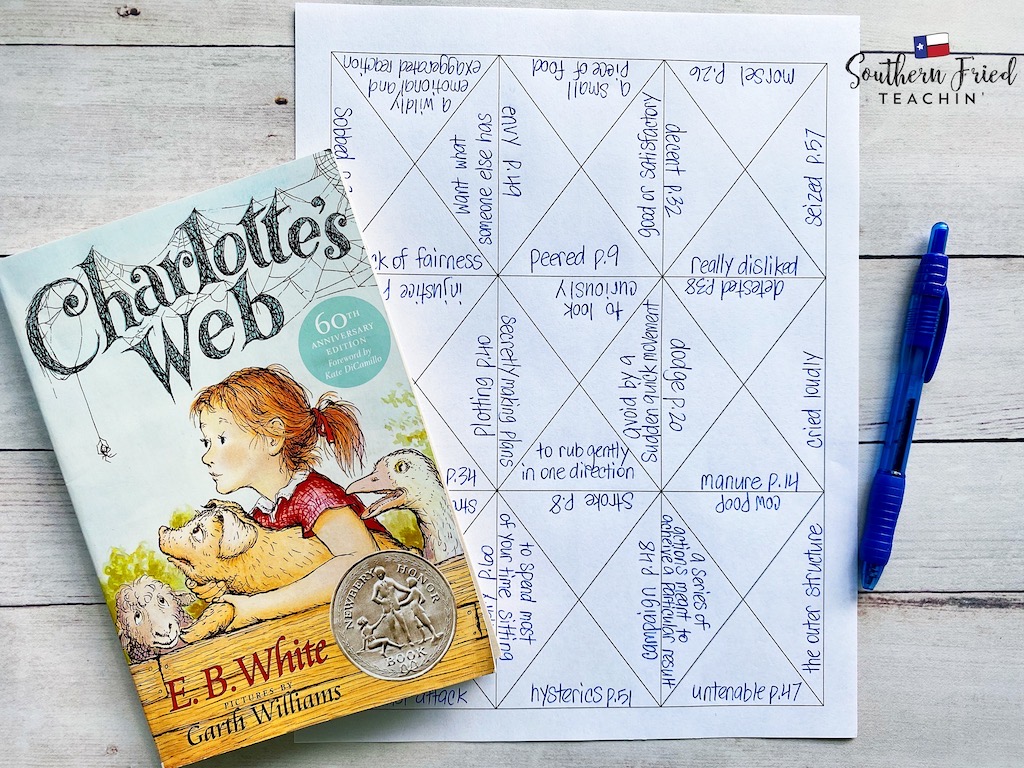
—– Multiplication facts —–
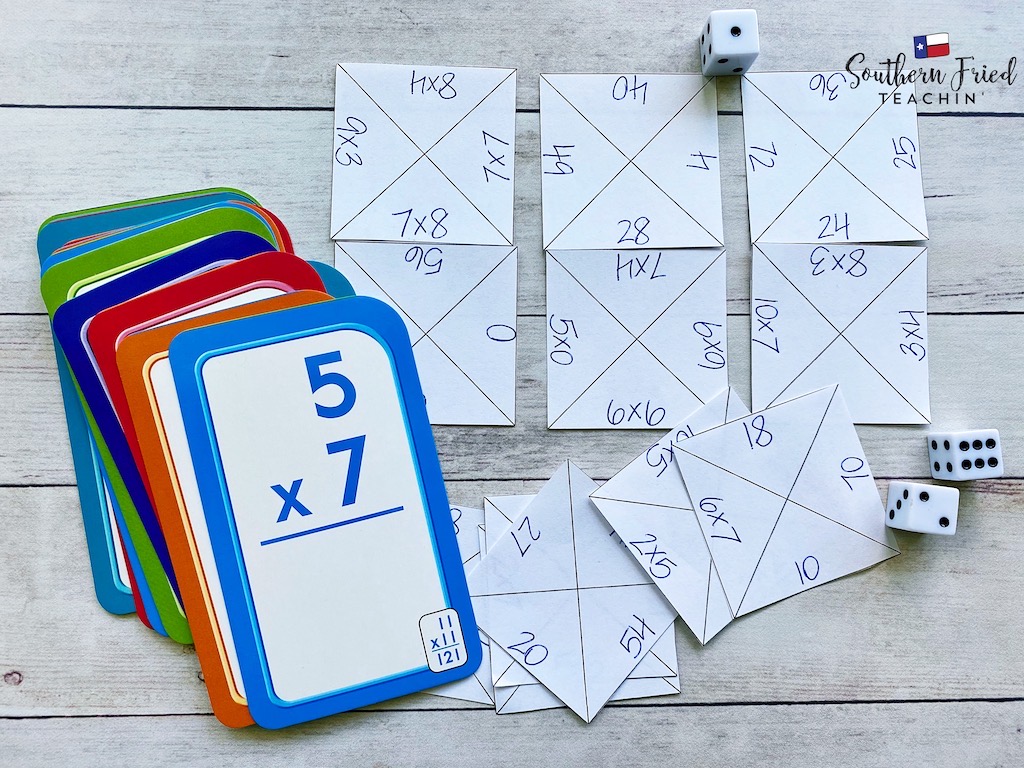
These previous two I just printed them out on white paper. Instead of typing it (because let’s face it, typing sideways and upside down isn’t easy) I just let it be handwritten.
The following ones I printed out on colored paper and again used the handwritten way instead of typing. This is how I used to do it when I first learned about them years ago (I won’t tell you just how many years ago it was). I liked copying them on colored paper because it was easy for me to keep the puzzles organized. I would label the pieces of the puzzle A, B, C, etc. So all the A puzzle pieces went into one ziplock baggie, and all the B pieces went in another. Finding puzzle pieces randomly in your classroom and you don’t know which baggie they go to is not a place you want to be in.
—– Contractions —–

You only cut the pieces out on the horizontal and vertical lines, NOT the diagonal lines. You will need to demonstrate this to your students. Trust me, you will have some that cut all the pieces out.
These are perfect for review, formative assessments, early finishers, and stations.
—– Plurals of irregular nouns —–
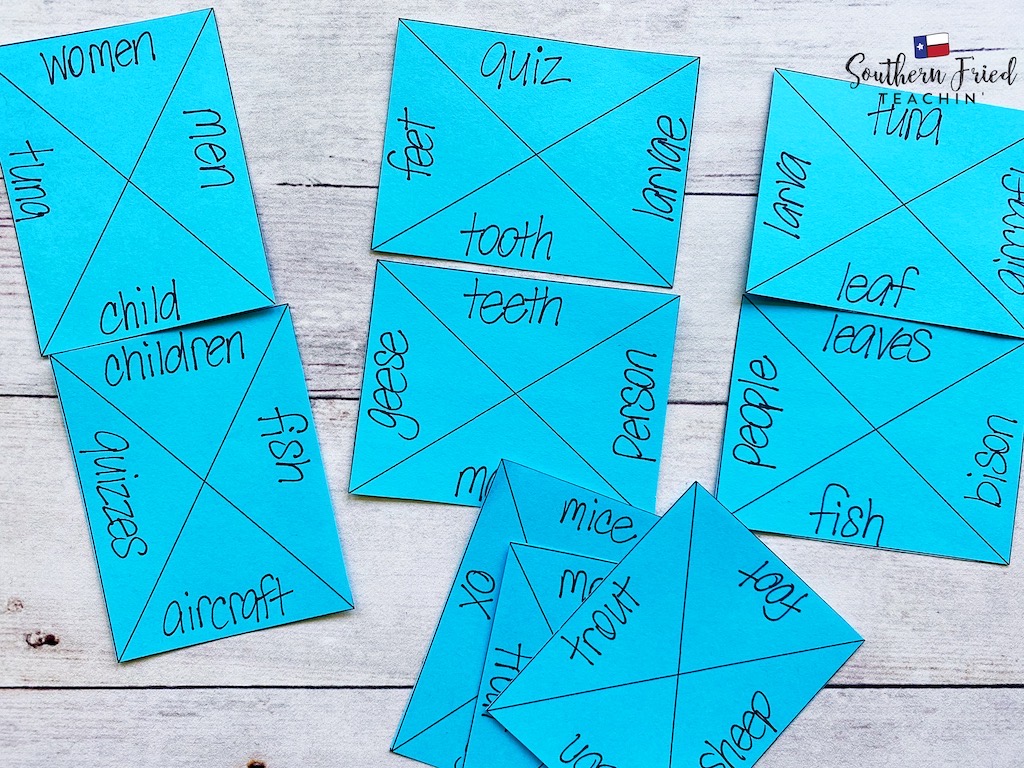
Think they are just for the younger grades? Think again! Check this one out…
—– Periodic table abbreviations —–
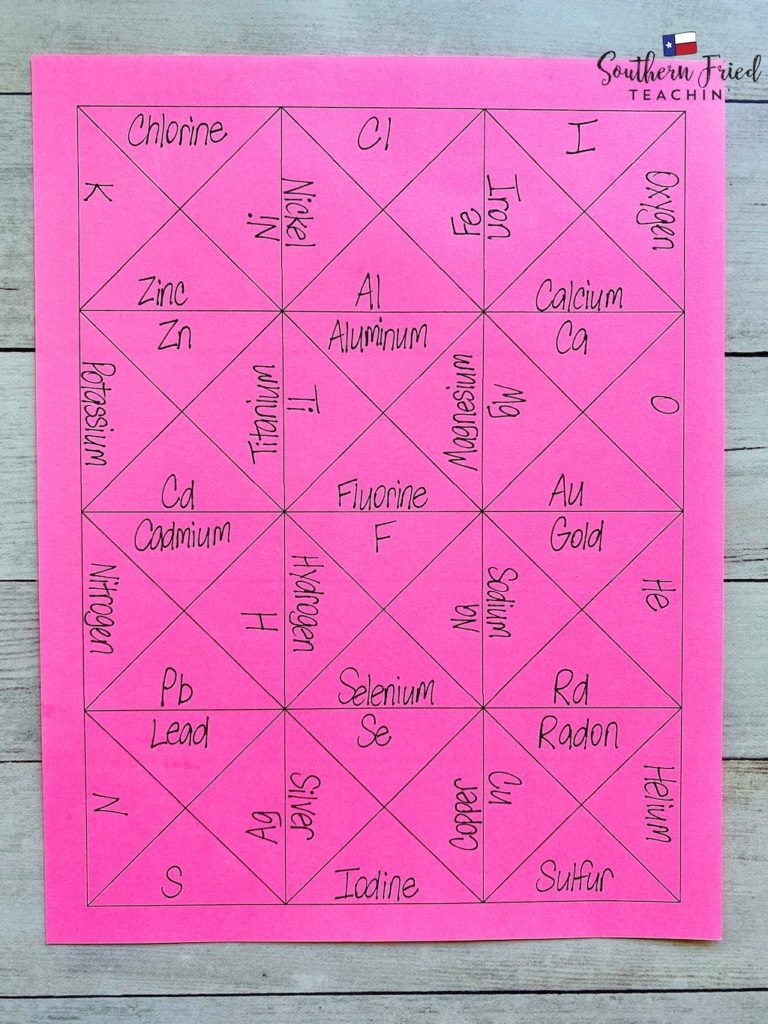
—– Fractions and decimals —–
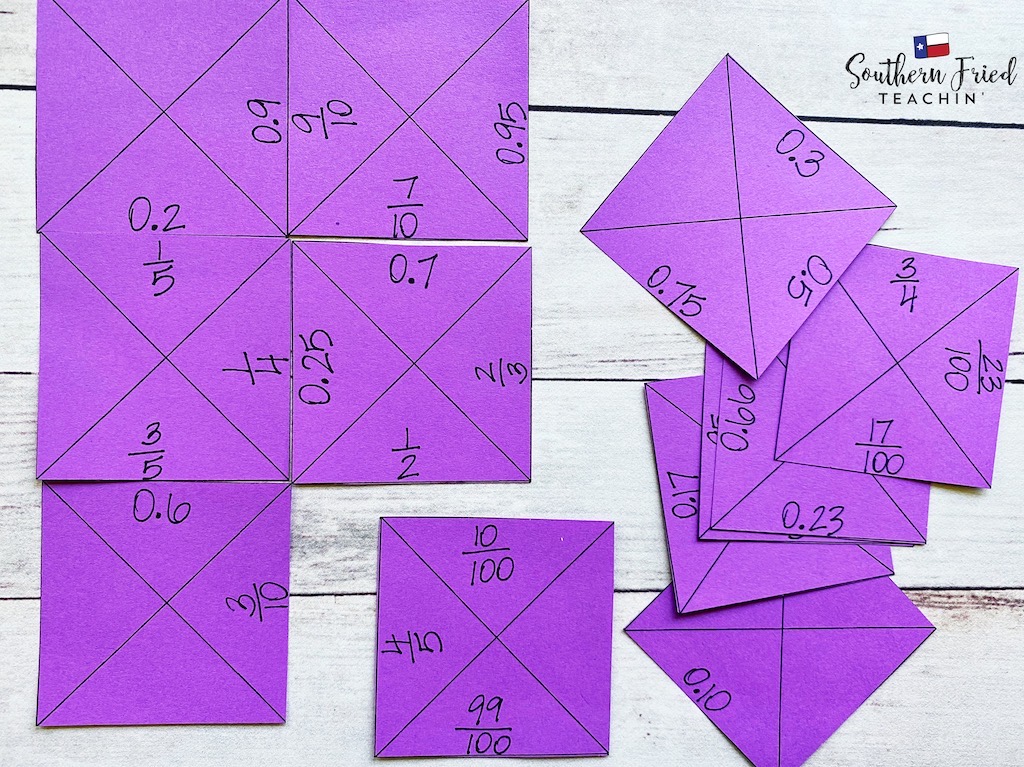
I love these puzzles because you can totally differentiate. You will notice that some of the puzzles have all the information facing the same way and some of them have the information backing up to each other more like a reflection.
In the fractions and decimals puzzle you will notice that some of the pieces are missing some information. This is a great accommodation to do for your students – when the puzzle is complete all the outside edges are blank. Normally all the edges have a “partner”…I always paired up an edge with another edge.
Also I have puzzles with 9 pieces (a 3 x 3 rectangle) and ones with 12 pieces (a 3 x 4 rectangle). Want to download the blank templates so you can create some of your own for your students? Click HERE!
For your students that need a little challenge, have them create one of their own!
I have some puzzle scrambles in my TPT store. They look a little different than the puzzles above. Instead of using diagonal lines I included a alphabet letter picture in the middle.
Here’s an example of a math puzzle scramble with place value through the ten thousands.
Cut all the pieces out, spread them out, and start matching them up until you get the full rectangle!
I let my students color in the letters after and only after they have gotten it checked by me, and it’s all correct.
Interested in the other math puzzle scrambles I have? Check them out HERE.
If you’re going to use the blank templates for students to use again and again in the classroom, I recommend you that you use card stock and laminate them.
Let me know if you try using these puzzle scrambles in your classroom! And don’t forget to download the blank templates!
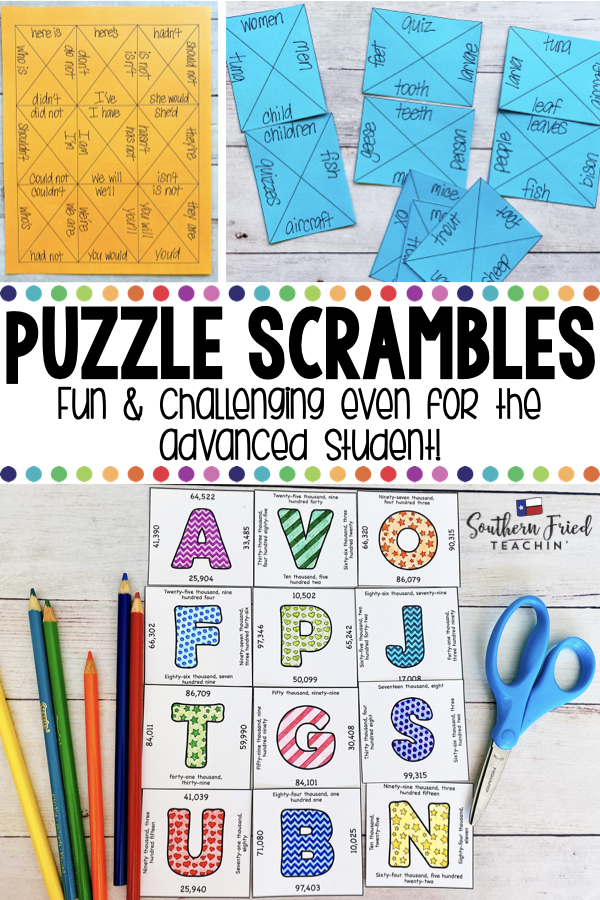

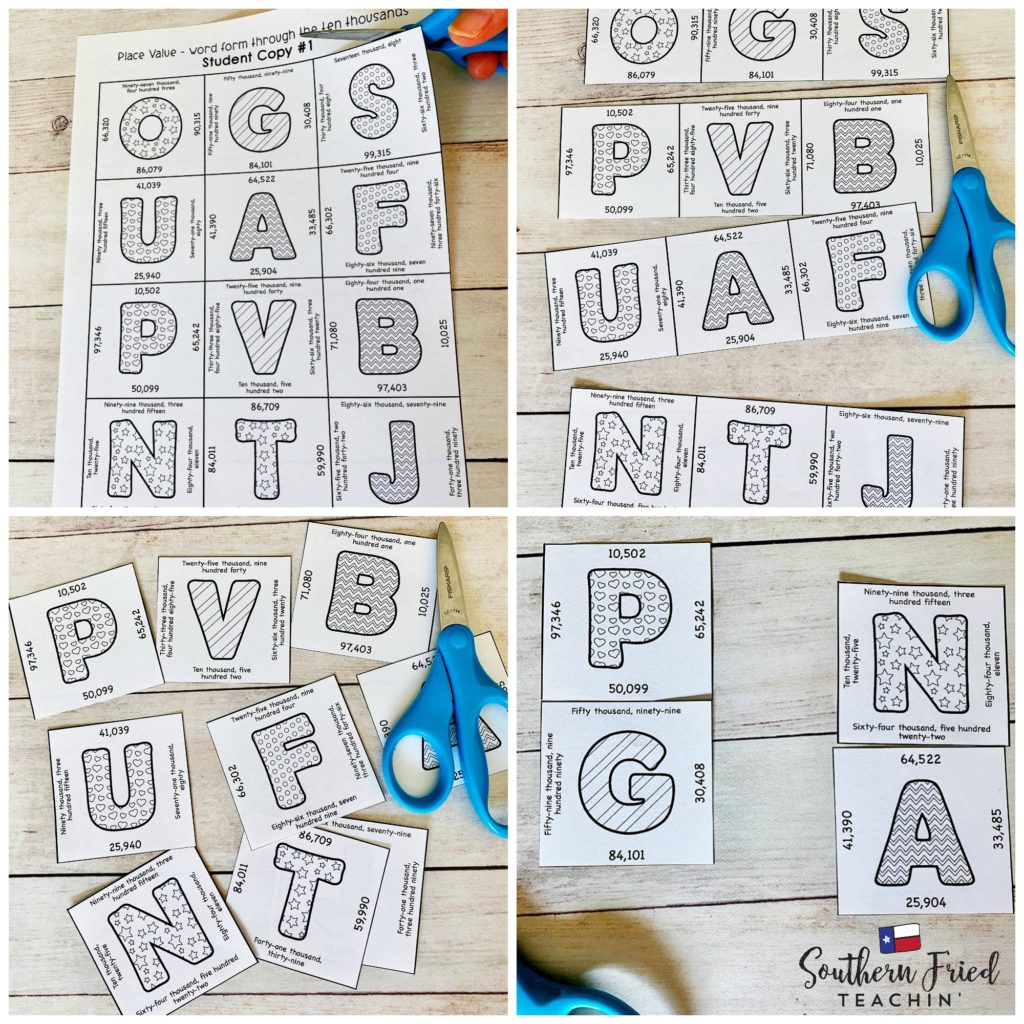
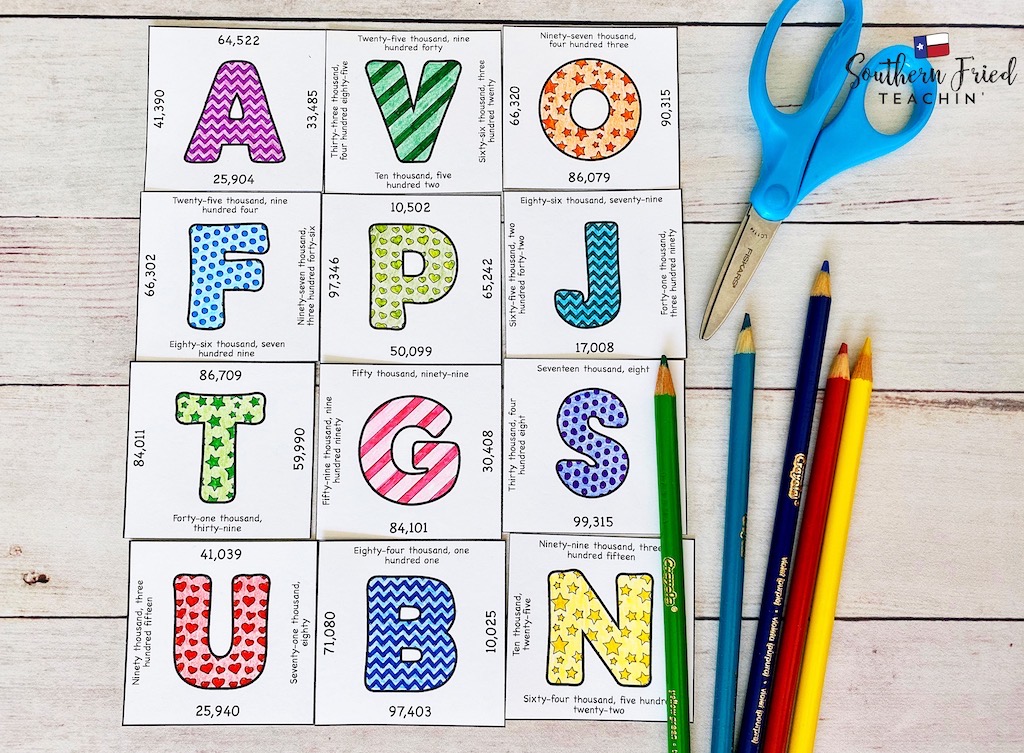
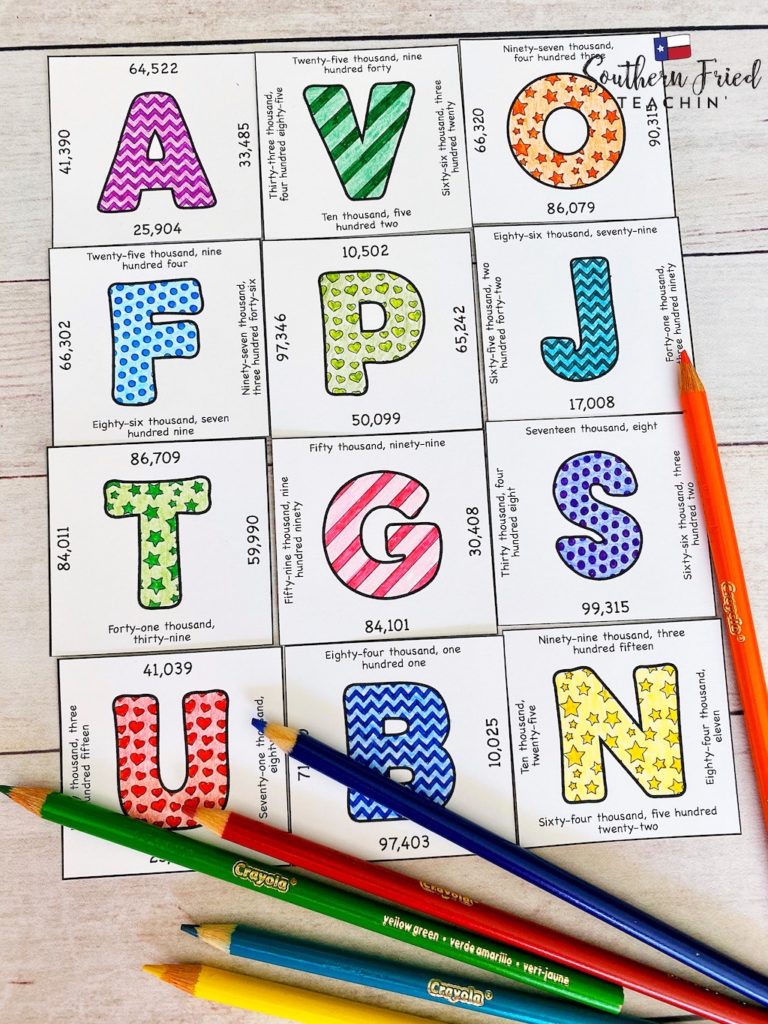


![As teachers we know that vocabulary is pivotal in students’ success. When I was growing up, our vocabulary activities consisted of looking up definitions in the dictionary and copying them down on notebook paper. Do you think I truly understood those vocabulary words? Not. One. Bit. In order to truly understand vocabulary words and what […]](https://i.pinimg.com/236x/97/e8/f5/97e8f54812d68c0d8c084b04391b3255.jpg)

![Have you ever heard of choice boards? I LOVE using choice boards in the classroom. I use them in math, reading, language arts, science, social studies, etc. They work in ANY subject and with ANY topic. Here are my top ten reasons to love choice boards! Students love to be able to make choices in […]](https://i.pinimg.com/236x/b9/24/a5/b924a5282fc6478ab0c9293eb5797602.jpg)
